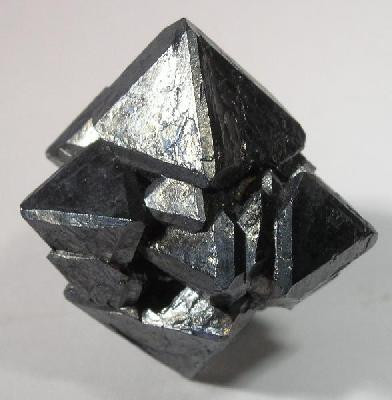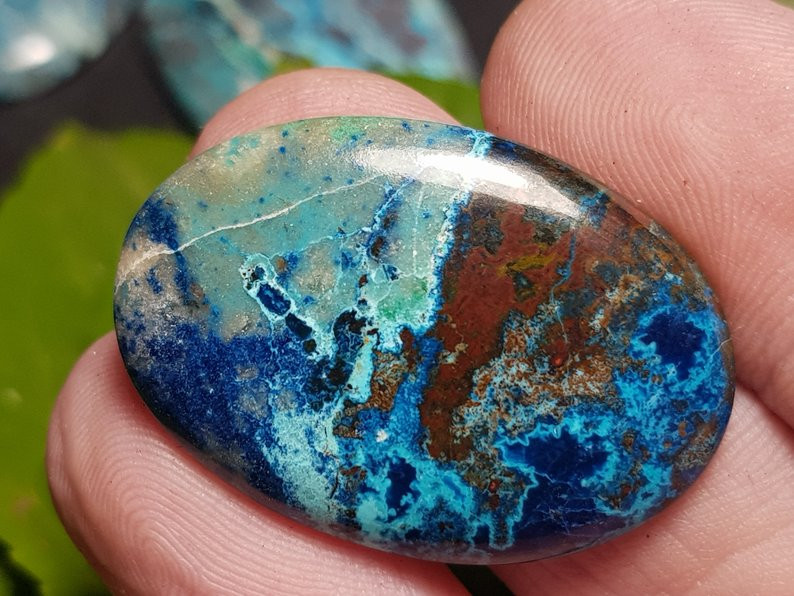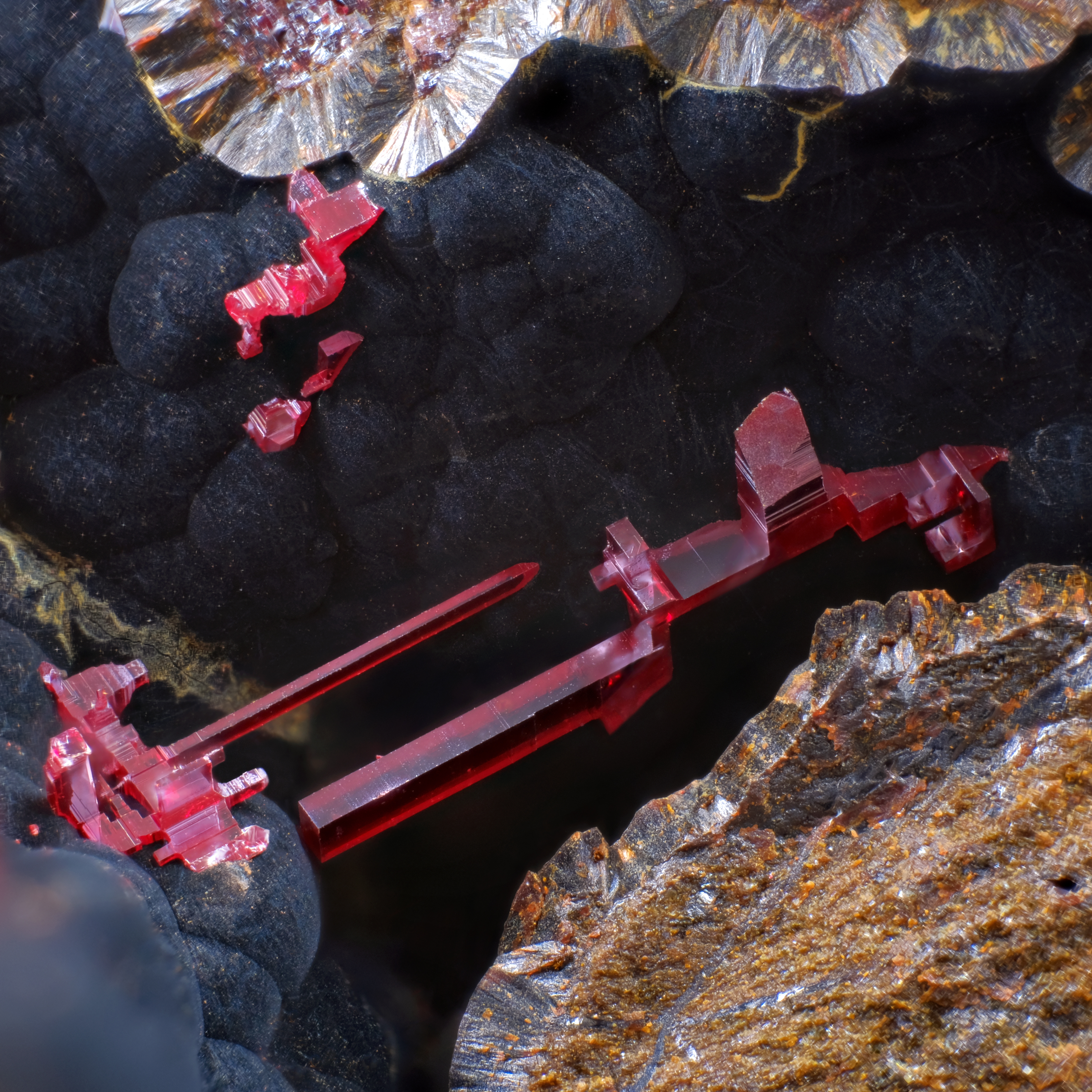
クプライト宝石:特性、意味、価値など
 赤銅鉱は世界中で産出される赤い銅鉱物です。赤銅鉱は宝石ですか?はい!赤銅鉱はジュエリーや装飾品の宝石としても使われています。
赤銅鉱は世界中で産出される赤い銅鉱物です。赤銅鉱は宝石ですか?はい!赤銅鉱はジュエリーや装飾品の宝石としても使われています。
ガーネットやルビーに似た色合いを持ち、ダイヤモンドを凌駕する鮮やかな輝きを放つこの石は、あらゆるコレクションに欠かせない存在です。
宝石品質の赤銅石も非常に希少であり、コレクターや愛好家にとってさらに魅力的です。
販売中の赤銅鉱の宝石を見てみませんか?このガイドでは、赤銅鉱の特性や価格、治癒力や歴史など、知っておくべき情報をすべてご紹介します。
 画像クレジット: Rob Lavinsky、iRocks.com – CC-BY-SA-3.0
画像クレジット: Rob Lavinsky、iRocks.com – CC-BY-SA-3.0
キュプライト石とは何ですか?
クプライトは、ルビーの色とダイヤモンドの輝きを持ち、サファイアとエメラルドと共に四大宝石の2つであるにもかかわらず、 半貴石に分類されます。実際、クプライトの別名は「ルビー銅」または「ルビー銅鉱石」です。
ルビーのより手頃な代替品として、 7月の誕生石としてキュープライトを代用することができます。また、キュープライトはガーネットに似ていることから、 1月の誕生石としても代用できます。また、伝統的な結婚2周年記念の宝石(ガーネット)や結婚40周年記念の宝石(ルビー)の代用としても使用できます。
占星術では、赤銅石は地の星座(牡牛座、乙女座、山羊座)の石です。また、数秘術では数字の2と共鳴します。
宝石以外では、赤銅鉱は何に使われますか?
かつては銅の供給源でしたが、最も重要な用途は赤いガラスを作るための染色や着色でした。
クプラットの仕様と特性
まず、赤銅鉱は銅なのでしょうか?銅鉱物という意味ではそうですが、純粋な銅ではありません。むしろ、銅の酸化物です。赤銅鉱の化学式はCu2Oです。
赤銅鉱が形成された後、擬似転位(結晶形状はそのままで新たな鉱物に変化すること)を起こしてマラカイトとなることがあります。マラカイトは緑色の炭酸銅水酸化物で、化学式はCu₂CO₂(OH)₂です。
重要な鑑別方法の一つは条痕検査です。原石と条痕プレートを用いて、石の目立たない部分を強く削り、どのような色の粉末(条痕)が現れるかを観察できます。真の赤銅鉱条痕は、金属的な茶色がかった赤色です。
キュプライトはモース硬度が非常に低いため、ほとんどの鉱物で傷がつきます。金属性のため密度も高く、同じ大きさの他の石よりも重く感じられます。
赤銅鉱の形状は、正八面体、立方体、正十二面体のいずれかですが、正十二面体は最も稀です。また、貫入双晶と呼ばれる結晶構造も一般的で、これは結晶が2つの異なる方向に成長して分岐し、「双晶」を形成するものです。しかし、鉱物の形状は様々であり、これについては次で詳しく説明します。
現時点では、赤銅鉱の残りの鉱物特性は次のとおりです。
モース硬度:3.5~4
色:赤、濃い赤、黒
結晶構造:等軸晶系/立方晶系
光沢: 亜金属光沢、金剛光沢、土のような光沢
透明性:透明から不透明
屈折率:2.84~2.85
密度:6.14-6.15; 6.00-6.07(ナミビア産)
裂け目:乏しい、4方向
骨折:貝殻状
縞模様:メタリックな茶色がかった赤
発光:なし
多色性:異常な形で存在する(結晶に複屈折がないため)
赤銅鉱の結晶習性のいくつかは、石の異なる変種を構成します。
キュプライトの種類
いくつかの赤銅鉱の混合物または変種(変種と見なすにはあまりにも類似しているが、別々の名前を必要とするほどには異なるもの)は次のとおりです。
バーナイト:赤銅鉱、藍銅鉱、そして時には孔雀石からなる岩石
タイル鉱石:塊状の晶癖とレンガ色の赤銅鉱の変種。マラカイトと並んでよく見られる。
カルコトリカイト:別名「プラッシュ銅鉱」とも呼ばれる、髪の毛のような薄い繊維状の結晶マットまたはスプレーを持つ赤銅鉱の変種。
カルコトリカイトはおそらく最もよく知られている変種です。その名前はドイツ語のchalkotrichitに由来し、ギリシャ語で「銅」と「髪」を意味する言葉に由来しています。
方解石の結晶の上に絡み合った成長物が見えるかもしれません。
 画像クレジット: Rob Lavinsky、iRocks.com – CC-BY-SA-3.0
画像クレジット: Rob Lavinsky、iRocks.com – CC-BY-SA-3.0
クプライトの意味と歴史
赤銅石は、基本的なニーズ、滋養、そして安心感を象徴しています。また、赤銅石の精神的な意味は、強さ、活力、そしてモチベーションを表すとも解釈されています。
形而上学的な実践において、赤銅石は土の要素に属します。様々な解釈では、赤銅石は母なる大地やシャーマニズムと関連付けられています。古代のエネルギーバランスを整える風水では、土の石は安全、知性、そして家族と結びついています。
歴史
「クプライト」という名称は、ラテン語で「銅」を意味するcuprumに由来しています。オーストリアの鉱物学者ヴィルヘルム・カール・リッター・フォン・ハイディンガー(または単にヴィルヘルム・ハイディンガー)が 1845 年にこの名称を選択しました。
ハイディンガーがこの名称を選ぶ前は、カプライトには次のような旧称がありました。
ルベライト
八面体銅 / 八面体銅鉱石
赤銅/赤ガラス質銅鉱石
酸化銅
ハイドロクプライト
赤銅鉱の用途は数千年前に遡ります。考古学的記録によると、紀元前2000年から1000年頃、赤銅鉱はガラスに赤色を与えるために使用され、ルビーガラスと呼ばれる製品が作られていました。
現代において、カプライトは非常に希少なものとなりました。宝石として最高品質の標本は、1970年代にナミビアで発見されました。
 画像クレジット: Masha Milshina | Creative Commons Attribution 4.0 Internationalライセンス
画像クレジット: Masha Milshina | Creative Commons Attribution 4.0 Internationalライセンス
クプラットの治癒特性
宝石の色とエネルギーは、 ヒーリングストーンとしての効能に影響を与えます。赤銅鉱は赤色で、モチベーション、エネルギー、情熱を高めるといった赤い宝石の効能を呼び起こします。
クプライトの大部分は宝石質ではなく、黒っぽい色合いをしています。他の黒い宝石と同様に、これらの結晶は精神修行へのより深い献身、より高度な知識、そして悪意ある力からの保護を授けます。
しかし、クプライトの身体的、感情的、チャクラの治癒特性についてはどうでしょうか?
身体の治癒
赤銅鉱の効能として次のようなものが挙げられます。
腎機能障害
膀胱の問題
めまい
乗り物酔い
生殖に関する問題
酸化ストレス
スピリチュアルな意味や関連性と同様に、クプライトの物理的特性は、肉体的なエネルギーとスタミナを高めることに関係しています。この石は、長寿と全体的な健康を促進すると信じられています。
感情的な癒し
感情面では、赤銅石は脳に驚くべき効果をもたらすと言われています。分析力、知性、創造性を高めると信じられています。
また、赤銅石のクリスタルは憂鬱を消し去り、感情的な困難の際に平穏をもたらし、サポートと安全の気持ちで精神を養うことで不合理な不安を克服するのに役立ちます。
チャクラヒーリング
チャクラのバランスをとることは、ネガティブな症状を特定し、その症状がどのチャクラ(エネルギー センター)に関係しているかを突き止め、チャクラを開いて症状を解決するという古代の技法です。
クプライトは、ルート(またはベース)チャクラのチャクラストーンです。このチャクラは、安心感、グラウンディング、そして繋がりといった根源的な欲求を司ります。このチャクラがブロックされていると、常に危険を感じたり、現実から乖離しているように感じたりすることがあります。クプライトを使うことで、このチャクラを開き、グラウンディングを促し、家族や愛する人との繋がりを感じることができます。
宝石に関して言えば、赤銅鉱はどのように等級分けされるのでしょうか?
 上の写真:赤銅鉱を内包したアズライトカボション
上の写真:赤銅鉱を内包したアズライトカボション
キュプライト宝石の特性
キュプライトの価値は、色、カット、サイズなどのカテゴリーに基づいて、個々の石がどこに位置するかによって決まります。
色
最高の色は、紛れもなく、特徴的なルビーレッドのキュープライトです。この色合いは美しいだけでなく、宝石品質のキュープライトでこの色合いのものを見つけるのは稀です。
赤銅鉱の色の原因は銅の組成にあり、これはアズライトやマラカイトの色の原因と同じです。
しかし、赤銅鉱には様々な色合いの赤や、黒に近い色合いのものもあり、これらの色合いは価値が低くなります。
カット
キュプライトをファセットカットすることは、その豊かな色合い、高い屈折率、金属光沢、そして見事な輝きを引き出すのに最適です。美しくカットされたキュプライトは非常に高い価値を持ちます。しかし、ファセットカットが不十分だと、鈍く暗い色合いになり、価値が下がることがよくあります。
残念ながら、クプラットは柔らかいため、ファセットカットのジュエリーには適していません。しかし、ビーズやカボションは、クプラットを使った美しいジュエリーとしてお使いいただけます。
販売されているキュプライトは、ほとんどの場合、キュプライト・アズライトやキュプライト・クリソコラといった他の石のインクルージョンとして混ざった状態で販売されています。稀に、これらの他の石がキュプライトのインクルージョンとして見つかることもあります。
サイズ
赤銅鉱の希少性の一因は、その結晶の大部分が宝石としては小さすぎることです。しかし、ナミビアのオンガンジャにある鉱床では、ファセット加工できるほどの大きさの宝石質の結晶が産出されており、この産地から産出される赤銅鉱は貴重です。
起源について言えば、赤銅鉱はどのようにして形成されるのでしょうか?そしてどこから来るのでしょうか?
 画像クレジット: Masha Milshina | Creative Commons Attribution 4.0 Internationalライセンス
画像クレジット: Masha Milshina | Creative Commons Attribution 4.0 Internationalライセンス
赤銅鉱の形成と供給源
赤銅鉱は、通常、銅鉱床が風化作用を受けることで形成されます。地下水は鉱床中の銅鉱物(一次鉱物)と反応し、二次鉱物へと変化します。この二次鉱物の一つが赤銅鉱です。
一般的に、赤銅鉱は銅を豊富に含む鉱脈(岩石間の鉱脈)の酸化地域で見つかります。通常は、天然銅、アズライト、マラカイト、リモナイトと並んで存在します。
採掘場所
キュプライトはどこで産出されますか?宝石質のキュプライト結晶の中で最大のものはナミビア産です。キュプライトのその他の産地には以下が含まれます。
アフリカ
オーストラリア
ボリビア
チリ
イングランド
フランス
日本
モンゴル(アルタイ山脈)
ロシア(ウラル山脈)
サルデーニャ島
アメリカ合衆国(アリゾナ州)
もちろん、ほとんどの購入者にとって最も重要な質問は、「赤銅鉱石はいくらかかるのか?」です。

キュプライト石の価格と価値
ファセットカットされた宝石の赤銅鉱の価格は、1カラットあたり40〜200ドルです。
カボションの多くは、アズライト・クプライト、マラカイト・クプライト、またはクリソコラ・クプライトです。これらの石は卸売価格で1個あたり約50ドルから200ドルで販売されています。クリソコラとクプライトの混合物は、「ソノラ・サンライズ」または「ソノラ・サンセット」として販売されることもあります。
クプライト原石の価格は幅広く、5ドルから10ドル程度から始まり、200ドル以上にもなります。
キュプライトのケアとメンテナンス
宝石のケアについてお話しする前に、まずはご自身の健康管理についてお話ししましょう。銅の含有量を考えると、「赤銅鉱は有毒なのだろうか?」と疑問に思うかもしれません。しかし、有毒である可能性があります。赤銅鉱の粉塵や繊維を吸い込むと危険で、嘔吐や、繰り返し吸入すると腎臓や肝臓に損傷を与える可能性があります。
しかし、赤銅粉塵は主に宝石研磨業者や原石を扱う人にとって懸念材料となります。研磨された標本は安全に扱うことができます。
宝石のお手入れについてですが、まずは適切なキュプライトを選ぶことが第一歩です。キュプライトは柔らかいため、傷つきやすいので、リングではなく、比較的傷つきにくいペンダントやイヤリングを選ぶことをお勧めします。
どちらを選ぶにしても、傷や破損から最大限に保護するために、 保護設定付きのジュエリーを選んでください。
研磨またはファセット加工されたキュプライトは、中性洗剤とぬるま湯で洗浄できます。洗剤の残りを洗い流した後、柔らかく埃のないマイクロファイバーの布で石を乾かしてください。刺激の強い家庭用洗剤、化学薬品、機械式/超音波洗浄機は使用しないでください。
カプライト石やジュエリーは、他の宝石から離れた暗くて密閉された場所に保管するのが最適です。
キュプライトストーンでコレクションを育てましょう!
宝石コレクターは、一般の購入者よりもクプライトについて詳しいかもしれませんが、だからこそこの石はより捉えどころがなく、魅力的なのです。きらめく輝き、金属的な光沢、そして魔法のような赤い色合いは、あなたの精神と活力を生き生きと保つのに最適です。
Gemstone Encyclopedia検索
最新記事
レインボーラティスサンストーンは、様々な内包物によって3つのゴージャスな光学的効果を持つ長石の一種です。燃えるように鮮やかな色合いと格子模様が、コレクターにとって希少な宝石となっています。
12th Jan 2026
チューライトは、ゾイサイト鉱物ファミリーに属する、鮮やかなバラ色の色合いを示す希少なノルウェー産の宝石で、ジュエリーのセッティングやペンダントによく使用されます。
6th Jan 2026
記事のカテゴリ
How To's is where you will find helpful articles from gem Rock Auctions on how to cut gemstones, select gemstones and buy gemstones.
9記事数
